“Great crimes feed on great silences. And the Uyghur today have fallen into a kind of black hole”.1
- Dilnur Reyhan, President of the European Uyghur Institute
The quote is a part of an open letter by Dilnur Reyhan and Raphael Glucksman (Member of the European Parliament) to the French President Emmanuel Macron before he visited China in November 2019. In this letter, Reyhan and Glucksman have requested the French President Macron to act against the abuses and stand for the rights of the Uyghurs in Xinjiang.2 Since its “forceful” incorporation into the People’s Republic of China (PRC) in 1949 and subsequently becoming autonomous region in 1955, Xinjiang has been witnessing the continuous and strategic persecution of the Uyghurs and other ethnic minorities under the control of the Chinese Communist Party (CCP). The term autonomous refers to the region which has “the Right or power of self-government”, “capable of existing independently”. However, the situation in Xinjiang is quite the opposite. According to a white paper issued in 2003, the Chinese government did not classify Uyghurs as an indigenous population, but as ethnic minorities in China.3 The Uyghurs, predominately belong to Sunni sect of Islam religion, are Turkic-speaking ethnic group native of Xinjiang region. Since 2009, multiple incidents of riots, knife-attacks, and bombing has made Xinjiang—a “new battlefield” and Uyghurs— “new perpetrators” in China’s war against the “three evils” of terrorism, extremism, and separatism.4 The article discusses the journey of Xinjiang and Uyghurs over the time, analyses the influx of Han people in Xinjiang as China’s strategy to erase the cultural and religious identity of Uyghurs, and some of the reactions from other nations and establishment, over the human rights abuses of Chinese against the Muslim minorities in Xinjiang region.
Xinjiang and Uyghurs
In Mandarin language, Xinjiang translates into Xin (New)- Jiang (Frontier/Borderland). It covers the land area of 16, 47,435 (1.6 million) square kilometres which is approximately 17 per cent of China’s total land area. Located in China’s North-West region, Xinjiang borders with Tibet in South, Afghanistan and India’s Union Territory (UT) of Ladakh in the South-West, Kyrgyzstan and Tajikistan to the West, Kazakhstan to the North-West, Russia in the North, and Mongolia in the North-East. Being a land-locked region with seven nations, Xinjiang has an abundance of natural resources, including oil and minerals. Considering these resources, China has been investing more than ever in Xinjiang intending to bolster oil extractions & refining, coal production, power generation, and transportation. To an estimate of 2014, Xinjiang has 21 billion of oil reserves—fifth of China’s total oil reserves.5 According to the data from the US Energy Information Administration (EIA), in 2014, the Tarim Basin in Xinjiang was the second-largest natural gas producing basin with the supply of 832Bcf/y, sharing 19 per cent of China’s total natural gas production. Considering the significance of natural reserves in Xinjiang, the Chinese government tightened its grip over the region and its population. Investing heavily on the advanced drilling and oil extraction measures, Chinese government unlocked the huge reservation of oil.6
At the beginning of 2nd century BC, Xinjiang’s Tarim Basin was part of Xiongnu empire; but during the Han-Xiongnu war in 60 BC, the region was occupied by Han dynasty to expand and secure the historical route to Central Asia to parts of Europe—the Silk Road.7 From the 2nd century to 8th century BC, the region was controlled and ruled by Tang dynasty, Turks. However, by the 10th century, Tang dynasty became weak, and as a result, the Xinjiang population got influenced by Arabs and led to beginning of Islamisation of the region.8 According to some historical evidence, the Islamisation of Tarim Basin was a part of an alleged attack on Xinjiang’s Kashgar by Qutayba Ibn Muslim in 7159, which signifies the arrival of Islam and Muslims in the Southern Xinjiang.
Between 1950 and 1980, several crises took place among the small portion of the Uyghur population against the Chinese government. The Chinese government suppressed the rebel movement with the arrest of the leader Osman (Batyr) Batur and other 25 people who were later executed in Urumqi city on 19 April 1951.10 The successive uprising of Uyghurs movement and subsequent suppression of the movement by the Chinese government has forced around 60,000 Uyghurs fled as refugees in the Soviet Union.11 Between 1960 and mid 2000, several small scale Uyghur movements rose like an ocean wave which were suppressed by the Chinese government forcibly. However, post-Soviet Union split and formation of several Central Asian countries, the exiled Uyghur diaspora had settled in these newly formed nations. Several Uyghur groups were formed for investigating and highlighting the Uyghurs repression at the international platform, such as the World Uyghurs Congress (WUC), the European Uyghur Institute (EUI), and the Uyghur Human Rights Project (UHRP).
‘Han-ification’ of Xinjiang—Confiscation of Uyghurs’ Identity
Since its takeover in 1949, the Chinese government has been managing the internal affairs of the region through repressive acts. In other words, Beijing has implemented a “colonial rule” to destabilise Uyghurs’—cultural identity, political rights, religious freedom, and feeding the “greed” of Chinese communist Party (CCP) through the exploitation of Xinjiang’s natural resources. The migration of Han Chinese population into various parts of Xinjiang has been a long-term and effective strategy to counter the rise of the Uyghur population. The speedy influx of Han population in Xinjiang had posed a threat to the culture and livelihood of the Uyghurs. As an estimate, between 1949 and 2008, the Han population ratio rose significantly; from 6.7 per cent (around 220,000) to 40 per cent (8.4 million). It highlighted the most significant demographical shift that took place in the major region of China since its founding era.12 The influx of Han is a part of the strategy of the CCP to demolish the identity of Uyghurs for two main factors—i) Uyghurs have a strong ethnic identity in comparison with Han who dominate and are loyal to the CCP, and ii) the region of Uyghurs [Xinjiang] which they inhabit, is rich in natural resources and has economic importance. The Han migration began with the mobilisation of PLA troops and later, attracting the rest of Han population with economic incentives such as discounts on land prices in Xinjiang.13
As another strategy to do the ‘Han-ification’ and diluting the cultural identity of Uyghurs, the Chinese government introduced “visit-assist-unite” programme. The “evil intentions” were concealed under the “welfare” layer of this programme. As part of the programme, Han people were asked [by the authorities] to live under the same roof with the Uyghur and other minority ethnic groups in Xinjiang. This way, Han people could cultivate the loyalty for the CCP or Chinese government in the hearts and minds of the Uyghur.14 China enforces stringent birth control measures, such as regular pregnancy checks followed by forced abortions in order to wipe out the future generation of Uyghurs; while at the same time, the Chinese government encourages Han people to give birth to more children. After declaring Xinjiang as an autonomous region, the Chinese government made sure that the Uyghurs were unable to dominate the region politically. Also, the import of the Han population ensured CCP’s control over the economy, and the loyalty of Han’s placed Uyghur and other ethnic minorities under constant pressure.
China’s “Fake” Propaganda
In recent years, China projected itself as a “transparent” nation and rejected the claims of the international human rights institutions over the repression of Muslim minorities in Xinjiang. On separate occasions in 2019, China invited diplomats of dozen countries (India, Russia, Kazakhstan, Kyrgyzstan, Uzbekistan, Tajikistan, Pakistan, Indonesia, Malaysia, Afghanistan, Thailand, and Kuwait) and a group of foreign journalists to visit the internments camps in Xinjiang.15 Interestingly, none of the Western or European nations’ diplomats were invited as visitors to Xinjiang. As the West has always been critical and vocal about the Uyghurs’ ill treatment in Xinjiang; clearly, the visit of these diplomats was nothing more than a well-orchestrated charade of depiction of Xinjiang’s so called “social and economic development” at a time when China is facing the international criticism of strategic oppression of the Muslim minorities in the region.
Hundreds of thousands Uyghur Muslims are illegally detained in the several detention camps across Xinjiang region. These Uyghurs are locked up in camps— “Not for what they do or did, but for Who they are”. Countering the claims of international human rights communities about the oppression of Uyghurs, the Chinese government has “smartly” floated the narratives about the detention camps—from “complete denial” to defining these camps as “vocational training centres”. Labelling Uyghur separatist movement as one of the three evils defined in China’s Anti-Terrorism Law, China has projected the concept of “mass detention” of Uyghurs as a successful model of counter-terrorism campaign before other nations. In September 2009, China’s State Council’s Information Office issued a white paper on Development and Progress in Xinjiang which propagated a false narrative of the “unity among ethnic groups” in Xinjiang. The White Paper falsely claims that unified social system implemented in 2006 has enabled Hans and Uyghurs to become “close comrades, colleagues, neighbours, and friends”.16 Through its controlled-national media, the Chinese Communist Party (CCP) projected harmonious visuals of Hans and Uyghurs staying together.
Some Reactions Against China’s Unfair Actions
Since 2016, the Chinese government has been carrying out oppression on Uyghur—a Turkic-speaking ethnic population living in Xinjiang. Over the excuse of countering terrorism, extremism, and separatism—the Chinese government has been imposing various rules and regulations violating the human rights, such as forbidding men to grow beards, forbidding women to cover their heads with scarfs (in a traditional Islamic way), and barring children from performing religious prayers. Many international human rights establishments have raised such issues at different platforms and different occasions. However, most of the nations, mainly Muslim-dominated countries such as Pakistan, Iran and Saudi Arabia remain silent and watchful on how far these nations may criticise the misdeeds of China against Uyghurs and other Muslim ethnic minorities. China being—one of the major powers in Asia, a permanent member of the UNSC (United Nations Security Council), and one of the major exports of arms and source of investments in developing and under-developed countries, can pressurise other nations to stay away from the internal affairs regardless of the “cultural genocide” it carries out in its backyard.
The Organisation of Islamic Cooperation
At the various international forums, many nations have raised their concerns over China’s atrocities on Uyghur Muslims; but surprisingly, the member states of the Organisation of Islamic Cooperation (OIC) chose to remain mum. On the behest of Pakistan, the OIC has made several statements on “single-tune” over India’s internal affairs of Kashmir but failed even to express opposition to the unfair treatment of Uyghurs by the authoritarian regime of China. Consisting of 57 countries as the Member States, out of which 53 countries are Muslim-majority nations—the OIC is the “collective voice of the Islamic world, to safeguard the interests of the Muslim community in favour of projecting peace and harmony”17; however, it failed to safeguard the human rights of Muslim ethnic minorities—Baluch people and Uyghurs in Pakistan and China, respectively.
Over a period of time, the OIC has issued statements on the minuscule issues related to Uyghurs but had never made any significant statement on the broader issue of the destruction of the religious and cultural identities of the Uyghurs. In August 2013, the spokesperson of the OIC made a statement regarding the media reporting of the death penalty given to two Uyghurs and jail terms to three for their alleged involvement in April 2013 clashes in Kashgar, Xinjiang.18 The statement requested the Chinese authorities to reconsider the death penalties and address the reasons behind those clashes. In June 2015, OIC issued a press statement expressing the concerns on the coverage of international media and reports of human rights institutions regarding Chinese government barring the Muslim minority population—Uyghurs, from their religious right of practising the fourth pillar of Islam (fasting in the month of Ramadan).19
On 19 January 2016, then-Secretary General of the OIC—Iyad Ameen Madani met Chinese President Xi Jinping in Riyadh, Kingdom of Saudi Arabia (KSA) and stated that “China will always be a good friend, good partner, and good brother of the Islamic countries”.20 At that time, the OIC Secretary-General must have had no clue that later in 2016, the Chinese government would implement its Anti-Terrorism Law, furthering the atrocities on the Muslim ethnic community in Xinjiang. Despite China being uncomfortable on the term “East Turkistan” being used in OIC meetings; just before the OIC’s 46th Session of the Council of Foreign Ministers in Abu Dhabi in March 2019, China played its card by inviting OIC delegation to Xinjiang and presented the “fake” development model of Xinjiang and counter-terrorism. In return, the OIC “welcomed the outcomes of the visit to Xinjiang and commended the efforts of China in providing care to its Muslim population”.21
The United States
As an aggressive diplomatic move during ongoing the United State (US)-China “Cold-War”, the US, on 16 May 2020, blacklisted 33 Chinese entities for their alleged linkages in human rights violations or relations with the Chinese military.22 On 27 May 2020, the United States (US) Congress approved the bill, for subsequent induction as a law on “Uyghur Human Rights Policy Act of 2020- S.3744” to condemn the gross human rights violations of Uyghur ethnic minority in Xinjiang and call for an end to illegal detention, torture, and harassment of these communities within and outside China.23 On 09 July 2020, the US government announced the sanctions against Chinese politicians for their direct or indirect involvement in the violations of human rights against Uyghurs ethnic community in Xinjiang. In first-of-its-kind, Chen Quanguo (the Party Secretary of the Xinjiang Uyghur Autonomous Region), Zhu Hailun (Party Secretary of the Xinjiang Political and Legal Committee [XPLC]), and Wang Mingshan (current Party Secretary of the Xinjiang Public Security Bureau [XPSB]) are high-ranking Chinese officials ever to be hit by the US sanctions.24 In a statement from the US Department of State on 09 July 2020, the Secretary of State—Mike Pompeo has emphasised that “the US will not stand idly by as the CCP carries out human rights abuses targeting Uyghurs, ethnic Kazakhs, and members of other minority groups in Xinjiang, to include forced labour, arbitrary mass detention, and forced population control, and attempts to erase their culture and Muslim faith”.25
Foreseeing the upcoming US Presidential elections in November 2020, and ongoing US-China trade war, the United States government may ban imports of certain products from the Xinjiang region where the Uyghurs are pushed into forced labour. According to a report by The New York Times dated 07 September 2020, the Trump administration may impose a ban on cotton products which would further affect the supply chain of the wide range of apparel and other related products.26 The US-led ban on cotton would not restrict to a region but would affect the global market of apparels as many international and widely used apparel brands reply on the cotton supply from the Xinjiang region. According to a report by the Australian Strategic Policy Institute in 2020, between 2017 and 2019, the Chinese government [forcibly] moved 80,000 Uyghurs out of Xinjiang (some of them were transferred from detention camps) to work in factories across China for at least 83 renowned global brands in the technology, clothing and automotive industries, including Apple, BMW, Gap Huawei, Nike, Samsung, Sony, and Volkswagen.27
The United Kingdom
In July 2020, tensions between the United Kingdom (UK) and China have emerged on several issues revolving around the unjustified treatment of Uyghurs in Xinjiang. The British Foreign Secretary—Dominic Raab has accused China of “gross and egregious” violations of human rights against its Uyghur population in Xinjiang. Subsequently, the Foreign Secretary has also hinted the review and further suspension of the UK’s extradition arrangements with Hong Kong over China’s move against city-state.28
In the early week of this month [September 2020] an independent tribunal has been constituted to investigate and collect shreds of evidence of Chinese government’s involvement in alleged Rights abuses and against Uyghurs in Xinjiang region. The tribunal, led by—Barrister Geoffrey Nice, a renowned Human Rights lawyer, would not have backing from the government of the United Kingdom (UK). Reportedly, the new evidence may include testimonies of several former security guards of the detention camps located in Xinjiang.29 Countering the allegations, the Chinese government has always refuted the allegations of the Human Rights abuses and propagated that all ethnic groups in Xinjiang receive equal treatment.
Pakistan
On 19 September 2018, Pakistan’s federal Minister for Religious Affairs and Interfaith Harmony—Noor ul-Haq Qadri met the Chinese Ambassador to Pakistan—Yao Jing and discussed the treatment of the Xinjiang Muslim community, among other bilateral issues.30 However, as a twisting element appeared on the fourth day of the meeting, the same federal minister—Noor ul-Haq Qadri rejected media reports that “he had voiced the concerns about the Muslim Uyghur community residing in China, during his meeting with Chinese Ambassador—Yao Jing. “This [the Uyghur issue] was not discussed,” told minister Qadri to Arab News on 22 September 2018. 31
Neglecting the human rights abuses of Pakistan army against its own Baluch ethnic community, Pakistan shout-loud “fake” concerns for the people of India’s Jammu and Kashmir; however likewise OIC, it chose to remain “zip-lipped” on Uyghurs’ conditions in China. On 16 January 2020, in an interview with German media—Deutsche Welle, Pakistan’s Prime Minister Imran Khan has said that “Chinese are ‘sensitive’ and [this is one of the reasons] Islamabad avoids discussing Uyghurs issue with them”. China, as a “great friend”, has helped Pakistan on several occasions and at challenging times of economic crisis. Therefore, Pakistan discusses such issues [Uyghurs] privately and not publicly with China.32
Further Actions…
On 06 July 2020, pro-Uyghur movement institutions—the East Turkistan Government-in-Exile (ETGE), and the East Turkistan National Awakening Movement (ETNAM) has submitted evidence and requested the International Criminal Court (ICC) to initiate an investigation into the genocide and other human rights abuses ordered by the senior officials of the CCP. The elements of evidence are based on the testimonies of Uyghurs who fled Xinjiang in fear of torture, forced sterilisation, forced marriages, and organ harvesting carriedout by the Chinese government/CCP officials.33 Despite China being a non-State party and non-signatory with the ICC, the complaint is the first-of-its-kind a challenge to the Chinese government on its crackdown on Uyghurs.
Not only as an emerging power of “self-dependent” economy in South Asia but also as a symbolic nation of peace and humanity—India must play an essential role in addressing the Chinese government-driven human rights abuses against the Uyghurs Muslim ethnic community in Xinjiang. So far officially, the Indian government has not made any statement in solidarity of the Uyghurs; but has been vocal on the issues of Tibetans. During the ongoing India-China, US-China, and UK-China tensions, it is a golden opportunity for India to bring forward a tactfully designed action plan against China, further exposing its misdeeds, mainly violations of human rights of ethnic minorities in Xinjiang and across China. Through various international platforms, China’s authoritarian regime led by President Xi Jinping needs to be pressurised to end the atrocities and allow its Muslim minorities to exercise their religious and cultural rights in harmony.
Endnotes
- Reyhan, Dilnur and Raphael Glucksman. “Uyghurs: the erasure of a people”, Liberation, 05 November 2019, Available from: https://www.liberation.fr/debats/2019/11/05/ouighours-l-effacement-d-un-peuple_1761673
- Ibid.
- “Full Text of White Paper on History and Development of Xinjiang”, People’s Daily Online, 26 May 2003, Available from: http://en.people.cn/200305/26/eng20030526_117240.shtml
- Clark, Michael. “China and Uyghurs: The ‘Palestinization’ of Xinjiang?”, Middle East Policy Council Vol XXII No.3 (September 2015), Available from: https://mepc.org/china-and-uyghurs-palestinization-xinjiang
- Wong, Edward. “China invests in region rich in oil, coal and also strife”, The New York Times, 20 December 2014, Available from: https://www.nytimes.com/2014/12/21/world/asia/china-invests-in-xinjiang-region-rich-in-oil-coal-and-also-strife.html
- United States of America. “China”, US Energy Information Administration, 14 May 2015, Available from: https://www.eia.gov/international/content/analysis/countries_long/China/china.pdf
- Whitefield, Susan. (2004). The Silk Road: Trade, Travel, War and Faith. Serindia Publications. p. 27.
- “History: Xinjiang”, Britannica, Available from: https://www.britannica.com/place/Xinjiang/History
- Dillon, Michael. (2017). Xinjiang and the expansion of Chinese Communist power: Kashgar in the early twentieth century (Routledge Studies in the Modern History of Asia). Routledge. p. 7.
- “China/Uighurs (1949-Present)”, University of Central Arkansas, Available from: https://uca.edu/politicalscience/dadm-project/asiapacific-region/chinauighurs-1949-present/#:~:text=The%20Xinjiang%20Uighur%20Autonomous%20Region,government%20on%20October%201%2C%201955.&text=Government%20troops%20fired%20at%20ethnic,refugees%20into%20the%20Soviet%20Union.
- Ibid.
- Howell, Anthony and C. Cindy Fan. “Migration and Inequality in Xinjiang: A survey of Han and Uyghur Migrants in Urumqi”, Eurasian Geography and Economics Vol. 52, No. 1, 2011, pp. 119-139, Available from: https://www.geog.ucla.edu/sites/default/files/users/fan/403.pdf
- Lary, Diana. (2012). Chinese migrations: the movement of people, goods, and ideas over four millennia, Rowman & Littlefield.
- Naiyu, Cha. “Witness to discrimination: confessions of a Han Chinese from Xinjiang”, Amnesty International, 16 June 2020, Available from: https://www.amnesty.org/en/latest/news/2020/06/witness-to-discrimination-confessions-of-a-han-chinese-from-xinjiang/
- “China takes diplomats from 12 countries, including India, on trip to Uyghur-dominated Xinjiang”, Hindustan Times, 09 January 2019, Available from: https://www.hindustantimes.com/world-news/china-takes-diplomats-from-12-countries-including-india-on-trip-to-uyghur-dominated-xinjiang/story-4KeX0xJo5BSrPY026b8IpK.html
- The People’s Republic of China. “White Paper: Development and Progress in Xinjiang”¸ The Information Office of the State Council of the PRC, 21 September 2009, Available from: http://www.china-un.ch/eng/bjzl/t621691.htm
- “About OIC”, Organisation of Islamic Cooperation, Available from: https://web.archive.org/web/20131030064136/http://www.oic-oci.org/oicv2/page/?p_id=52&p_ref=26&lan=en
- “OIC spokesperson expressed concern over sentencing Uygur Muslims in Xinjiang Uygur Autonomous Region in China”, Organisation of Islamic Cooperation, August 2013, Available from: https://www.oic-oci.org/topic/?t_id=8335&ref=3360&lan=en
- “OIC expresses concern over the situation of Muslim minority in China”, Organisation of Islamic Cooperation, 25 June 2015, Available from: https://www.oic-oci.org/topic/?t_id=10234&ref=4043&lan=en
- ”OIC participates in media forum in Urumqi, China”, Organisation of Islamic Cooperation, 17 September 2016, Available from: https://www.oic-oci.org/topic/?t_id=11561&ref=4533&lan=en ; People’s Republic of China. “Xi Jinping meets with Secretary-General Iyad Ameen Madani of Organisation of Islamic Cooperation”, Ministry of Foreign Affairs of the People’s Republic of China, 20 January 2016, Available from: https://www.fmprc.gov.cn/mfa_eng/zxxx_662805/t1333568.shtml
- Chan, Holmes. “Organisation of Islamic Cooperation ‘commends’ China for its treatment of Muslims”, HongKong Free Press, 14 March 2019, Available from: https://hongkongfp.com/2019/03/14/organisation-islamic-cooperation-commends-china-treatment-muslims/; EurAsian Times Desk. “Why Islamic Countries Are Not Opposing Chinese Persecution of Muslims?”, Eurasian Times, 07 April 2019, Available from: https://eurasiantimes.com/why-islamic-countries-are-not-opposing-chinese-persecution-of-muslims/
- Rennemo, Andrew. “With China Sanctions, America Pushes the Limits of Its Financial Power”, The Diplomat, 19 June 2020, Available from: https://thediplomat.com/2020/06/with-china-sanctions-america-pushes-the-limits-of-its-financial-power/
- The United States. “Uyghur Human Rights Policy Act of 2020”, The United States Congress, 17 June 2020, Available from: https://www.congress.gov/116/plaws/publ145/PLAW-116publ145.pdf ; Amberg Paul, Eunkyung Kim Shin, and Laura Klick. “US Congress Approves Sanctions Bill Targeting Human Rights Violators in China”, BakerMcKenzie, 03 June 2020, Available from: https://sanctionsnews.bakermckenzie.com/us-congress-approves-sanctions-bill-targeting-human-rights-violators-in-china/.
- “Xinjiang: US sanctions on Chinese officials over 'abuse' of Muslims”, BBC News, 09 July 2020, Available from: https://www.bbc.com/news/world-us-canada-53355697; Shaw, Adam. “Trump administration sanctions Chinese officials over human rights abuses against Uyghur Muslims”, Fox News, 09 July 2020, Available from: https://www.foxnews.com/politics/trump-administration-sanctions-chinese-officials-human-rights-abuses
- The United States. “Press Statement: The United States Imposes Sanctions and Visa Restrictions in Response to the Ongoing Human Rights Violations and Abuses in Xinjiang”, US Department of State, 09 July 2020, Available from: https://www.state.gov/the-united-states-imposes-sanctions-and-visa-restrictions-in-response-to-the-ongoing-human-rights-violations-and-abuses-in-xinjiang/ ; Shaw, Adam. “Trump administration sanctions Chinese officials over human rights abuses against Uyghur Muslims”, Fox News, 09 July 2020, Available from: https://www.foxnews.com/politics/trump-administration-sanctions-chinese-officials-human-rights-abuses
- Swanson, Ana. “U.S. may ban cotton from Xinjiang region of China over rights concern”, 07 September 2020, Available from: https://www.nytimes.com/2020/09/07/business/economy/us-china-xinjiang-cotton-ban.html
- Xu, Vicky Xiuzhong, Danielle Cave, et.al. “Uyghurs for sale: ‘re-education’, forced labour and surveillance beyond Xinjiang”, Australian Strategic Policy Institute, Policy Brief, No. 26/2020, Available from: https://s3-ap-southeast-2.amazonaws.com/ad-aspi/2020-03/Uyghurs%20for%20sale_UPDATE-03MAR.pdf?HkDS1tkITXTpF7eZJQ4AdwXTejt3ZDtC ; “Top brands ‘using forced Uighur labor” in China: report”, Deutsche Welle, 02 March 2020, Available from: https://www.dw.com/en/top-brands-using-forced-uighur-labor-in-china-report/a-52605572 ;
- “UK accuses China of 'gross and egregious' human rights abuses against Uyghur population in Xinjiang”, ABC News, 20 July 2020, Available from: https://www.abc.net.au/news/2020-07-20/uk-accuses-china-of-human-rights-abuses-uyghur-xinjiang/12472028
- Hui, Sylvia. “UK public tribunal to probe Uighur genocide allegations”, Associated Press, 03 September 2020, Available from: https://apnews.com/1596ae9f225a0c93fb07ac4376bdc924
- Hussain, Javed. “Religious affairs minister discusses treatment of Xinjiang Muslims with Chinese envoy”, Dawn, 19 September 2018, Available from: https://www.dawn.com/news/1433886
- “No talks on Uighurs with China envoy, Pakistan minister says”, Arab News, 22 September 2018, Available from: https://www.arabnews.pk/node/1376226/pakistan
- Shams, Shamil. “Exclusive: Pakistani PM Imran Khan says escalation of Iran conflict would be ‘disastrous’”, Deutsche Welle, 16 January 2020, Available from: https://www.dw.com/en/exclusive-pakistani-pm-imran-khan-says-escalation-of-iran-conflict-would-be-disastrous/a-52021938
- “Press Release: Uyghur Genocide and Crimes Against Humanity: Credible Evidence submitted to ICC for the first time asking for investigation of Chinese officials”, East Turkistan Government-in-Exile, 06 July 2020, Available from: https://east-turkistan.net/press-release-uyghur-genocide-and-crimes-against-humanity-credible-evidence-submitted-to-icc-for-the-first-time-asking-for-investigation-of-chinese-officials/ ; Chang, Chris. “Exiled Uyghurs submit evidence related to China’s internment camps”, Taiwan News, 13 July 2020, Available from: https://www.taiwannews.com.tw/en/news/3965500
(The paper is the author’s individual scholastic articulation. The author certifies that the article/paper is original in content, unpublished and it has not been submitted for publication/web upload elsewhere, and that the facts and figures quoted are duly referenced, as needed, and are believed to be correct). (The paper does not necessarily represent the organisational stance... More >>
Image Source: https://i0.wp.com/asiatimes.com/wp-content/uploads/2019/10/Uighur-China-Protest-AFP.jpg?fit=1200%2C900&ssl=1

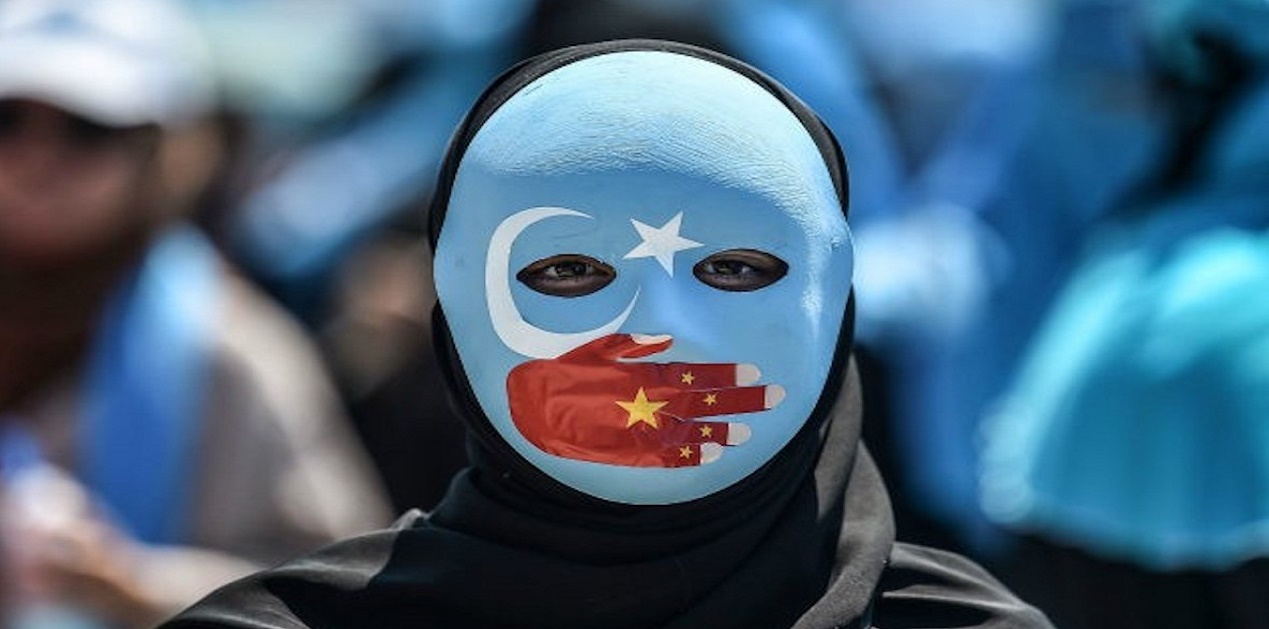


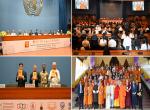
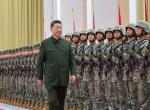
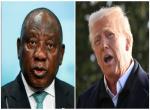


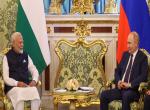
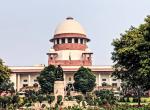
Post new comment